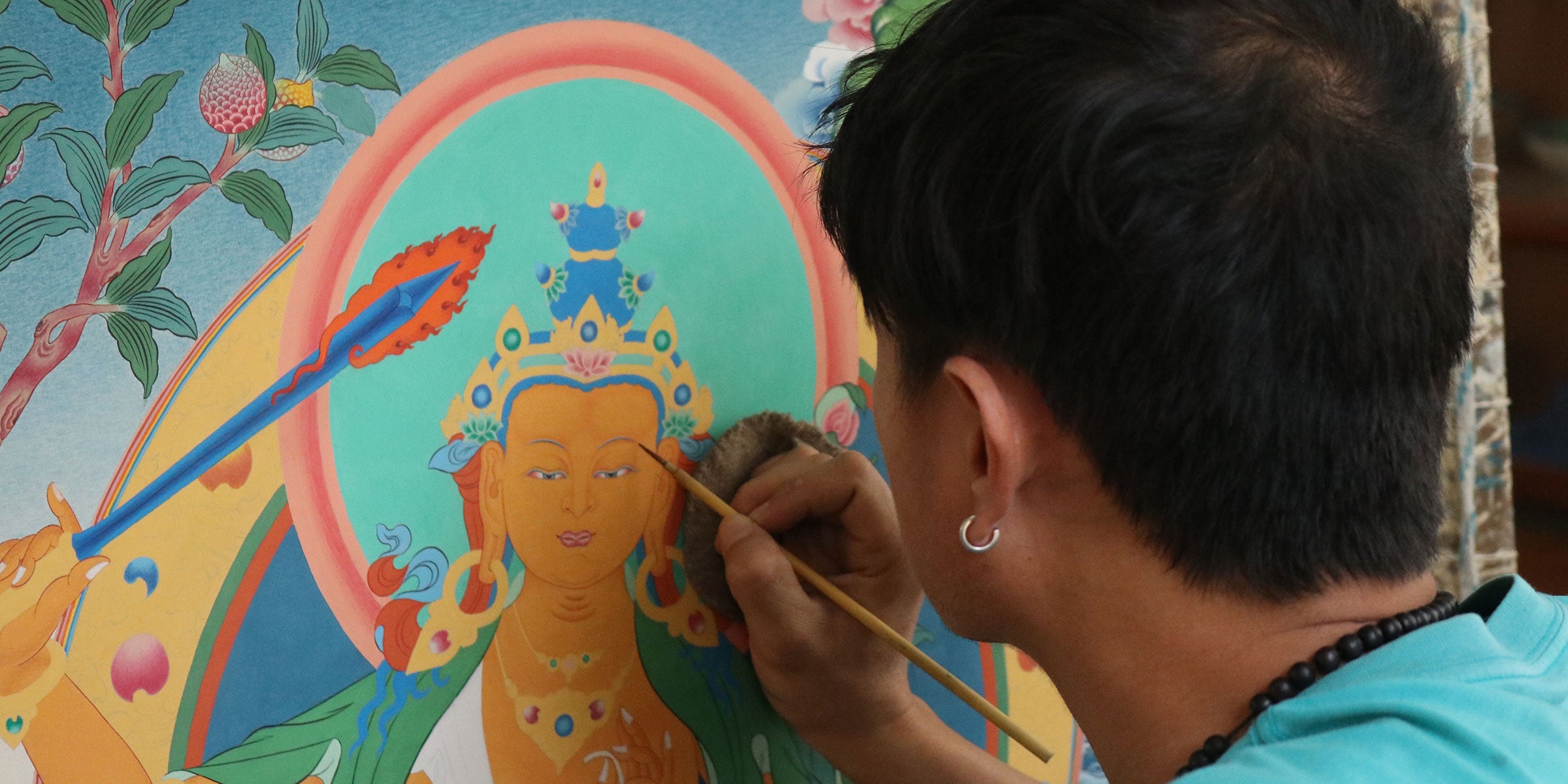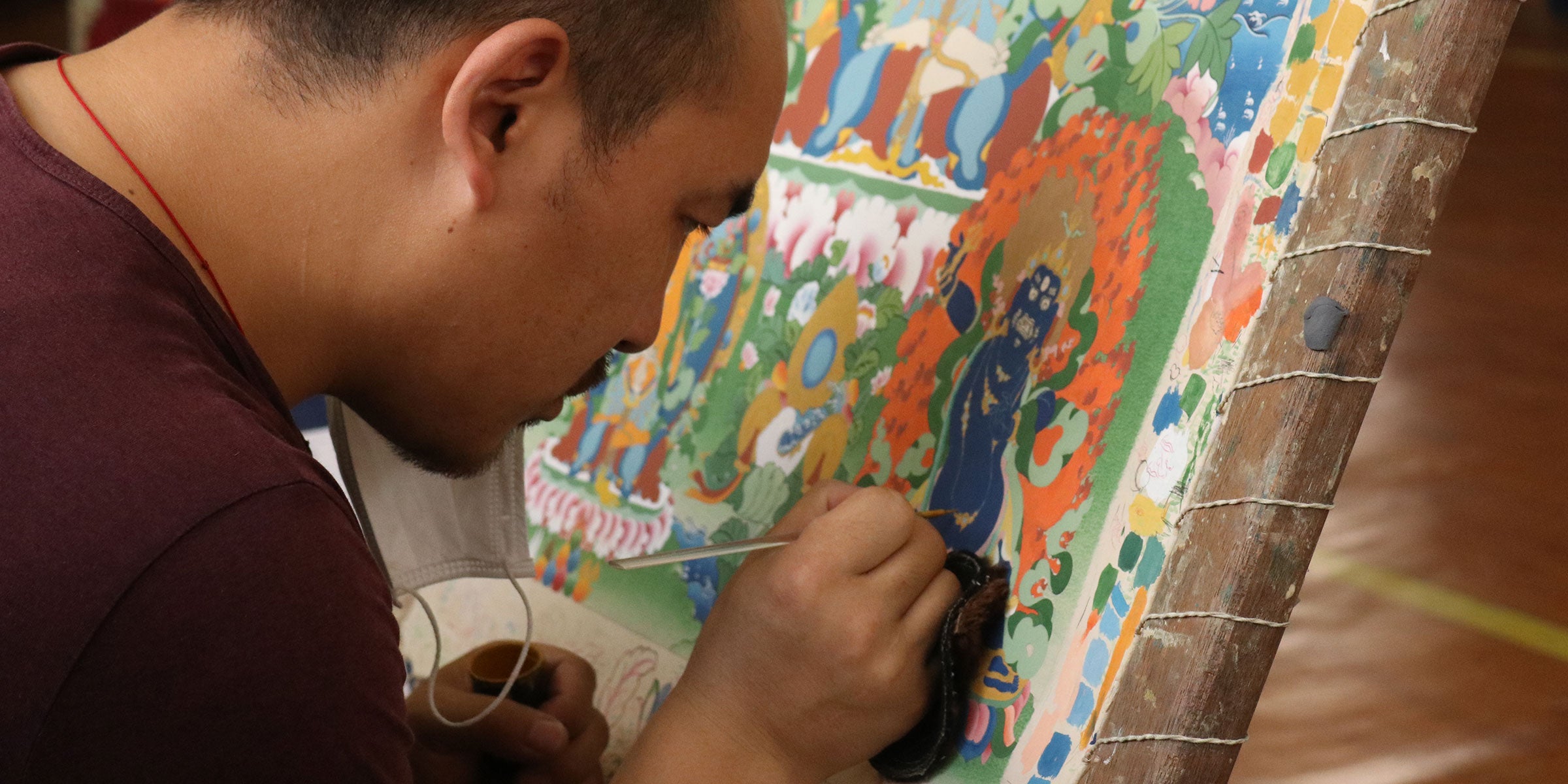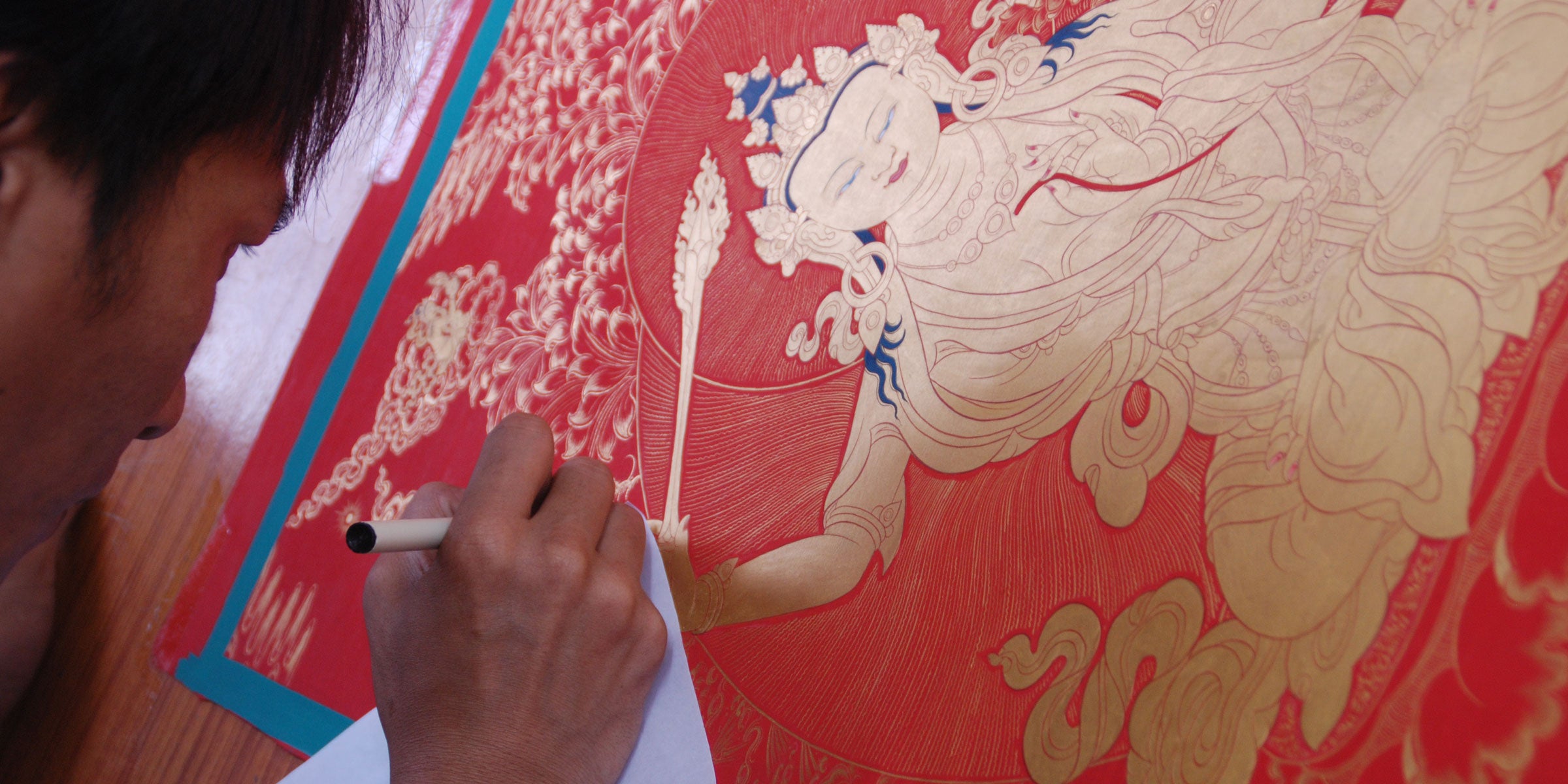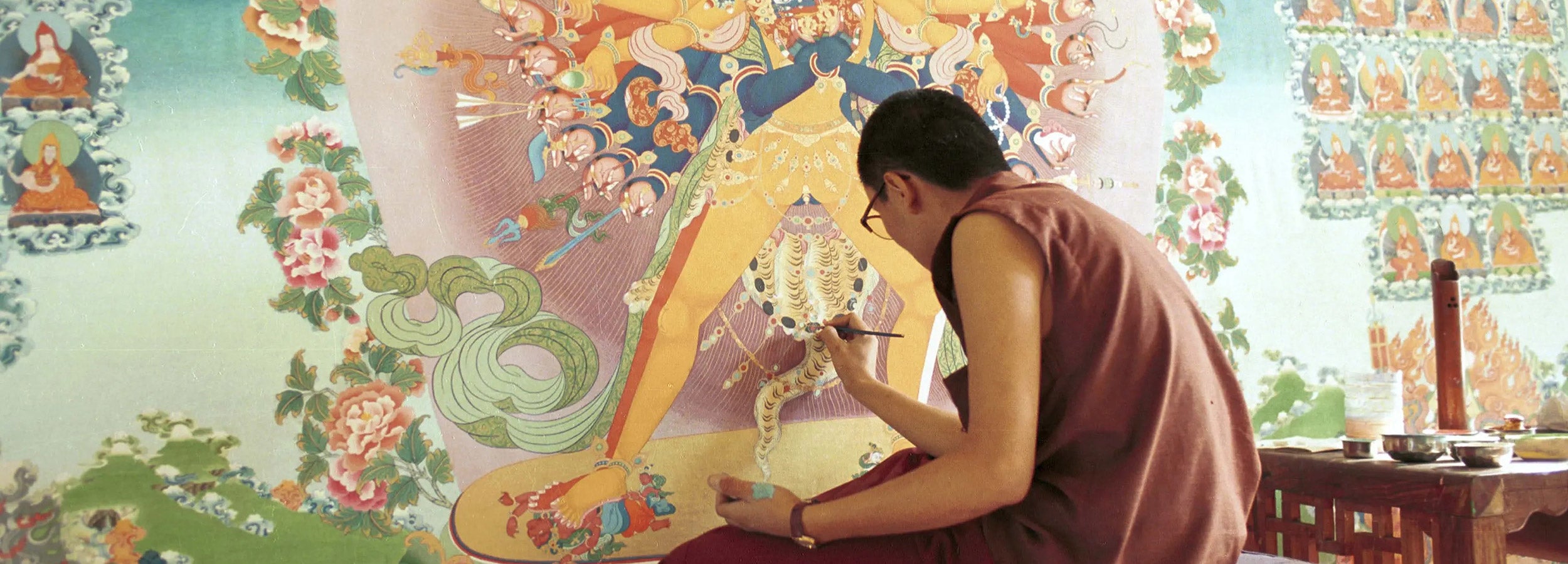Thangka Painting
History
Thangka painting, a unique art form that has thrived in Tibet for over a millennium, traces its origins back to the 7th century when it was introduced by the Newaris of Nepal. This art form has since evolved into various schools and styles, each with its own distinct characteristics and cultural significance.
The style most common in Central Tibet was called Menri, characterized by a central figure surrounded by depictions of events associated with this figure or by other minor figures. In the 17th century, the 5th Dalai Lama introduced a system of guilds that remained until the mid-20th century.

Artists were commissioned thangkas by monasteries or individuals. They were intended as objects of meditation or spiritual inspiration or to create merit for a loved one who had passed away. Artists took the time required to do the work and were supported by patrons who appreciated their effort and ability.
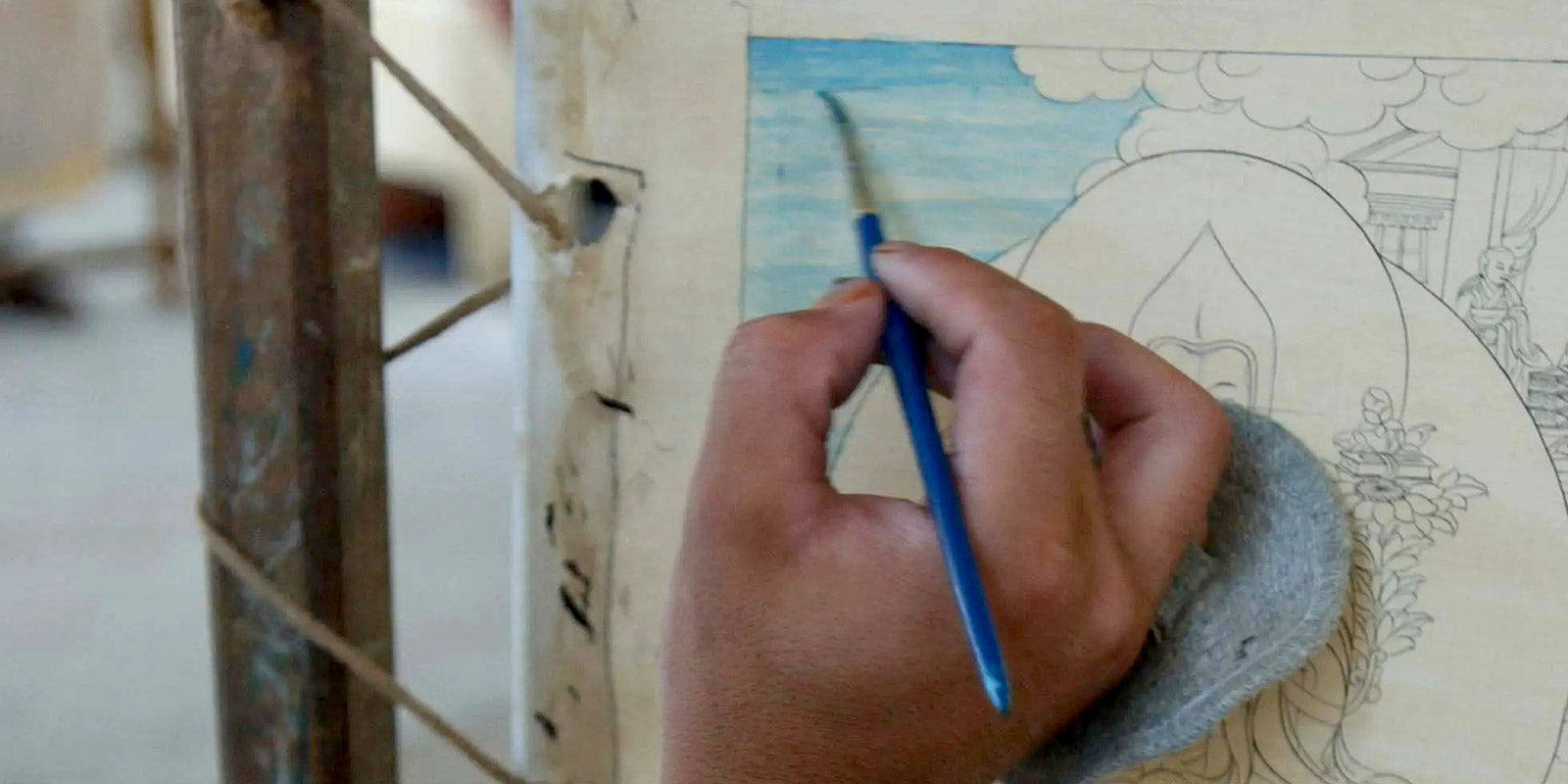
A thangka painter’s goal is to create images that inspire the viewer. Unlike Western works of art, which are the product of the artist’s personal ingenuity, Tibetan religious art is regarded as a way to communicate transcendental qualities to practitioners, the painter being the vessel. In the past, artists were often lamas, people with spiritual training whose talents were expressed spontaneously. Others were talented individuals who drew their inspiration and training from their masters, who themselves belonged to an unbroken line of artists reaching back for centuries.
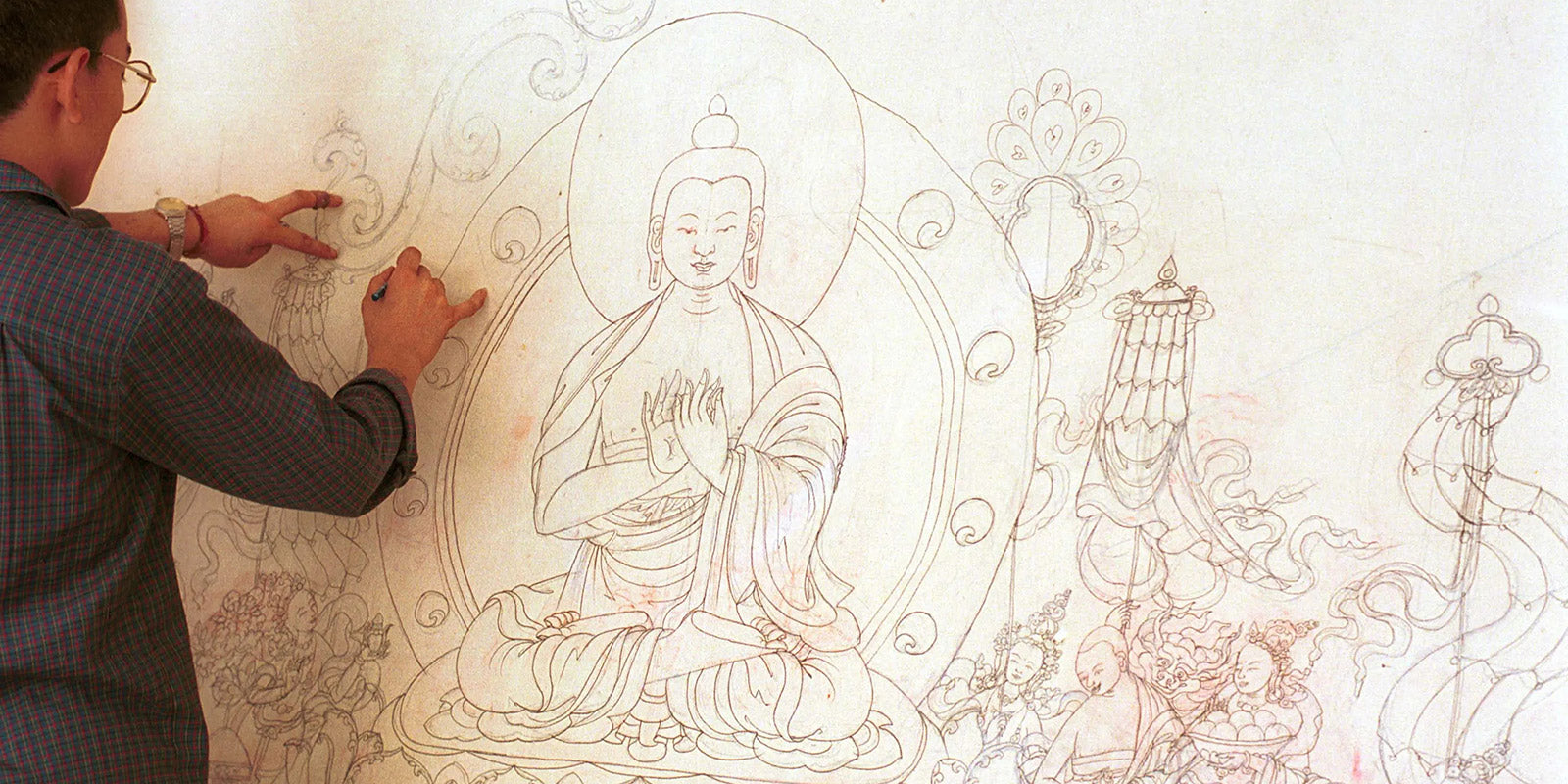
Thangka painting at Norbulingka
Aspiring thangka artists begin by studying the iconographic grids and proportions of different deities and then master mixing and applying mineral pigments. Norbulingka offers a three-year thangka training program. Upon completion, a student can join the workshop and apprentice for three years, assisting the masters or painting their own simple pieces, depending on their ability.
The first step in the making of a thangka is stitching canvas onto a wooden frame and preparing the surface with a mixture of chalk, gesso, and base pigment, which is rubbed in until the texture of the cloth is no longer apparent. The outline of the deity is then sketched in pencil using the iconographic grid pertaining to the deity being depicted, then outlined in black ink. Powders of crushed mineral and vegetable pigments are mixed with water and adhesive to create paint. Landscape elements are blocked in and shading is applied using both wet and dry brush techniques. Finally, 24 kt gold paint is added in certain areas for highlights, and the piece is framed in a precious brocade border. A standard thangka in our collection, which is about 18 x 12 in., takes an artist about six weeks to complete.
WORKSHOPS
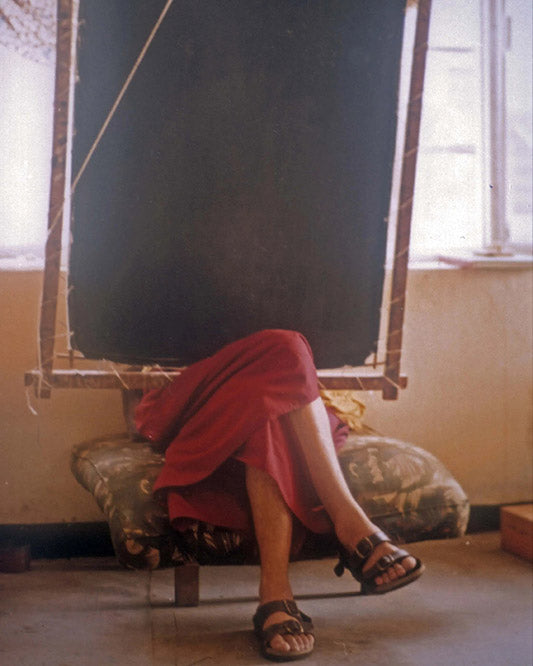
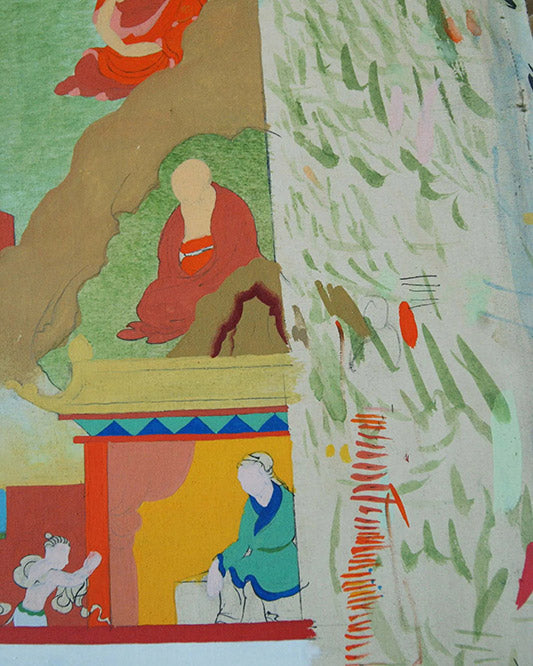
For those who wish to learn the art of thangka, Norbulingka offers workshops ranging from one day to several months. Courses are designed based on the time and interest of individuals and groups. They are a great way to learn more about the sophistication of Tibetan culture and students will leave with a beautiful piece of their own. Beginning students will learn basic iconography of various deities, and then move on to learn painting techniques.
Our Masters
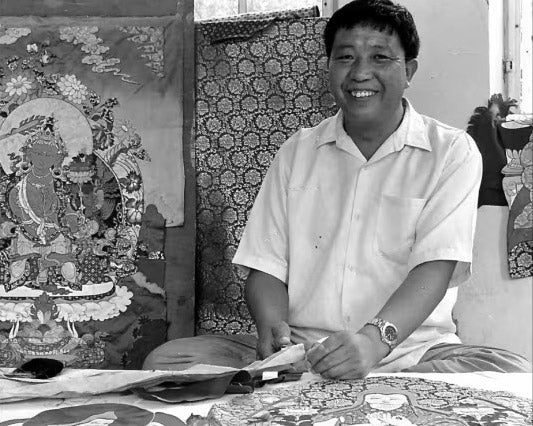
Tempa Chophel, Late Master

Tenzin Norbu, Master


